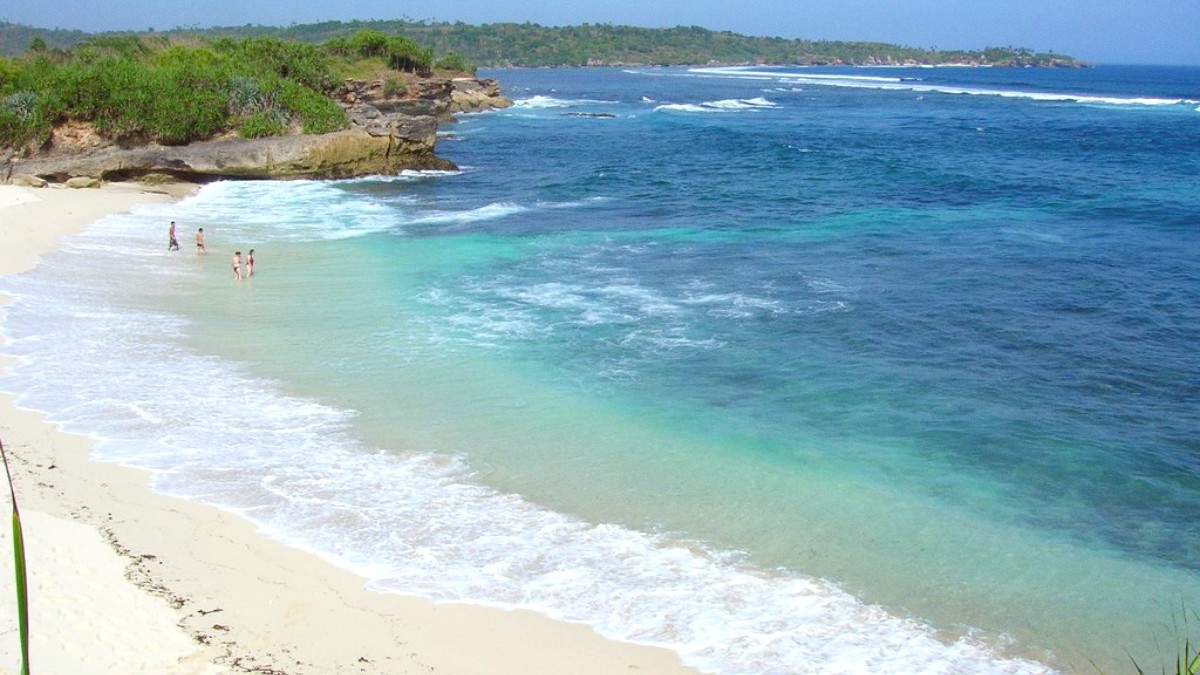
Bali, Indonesia
Salt and tropical flowers scent the air. Views stretch across clear blue waters to Bali's distant shores. On Nusa Lembongan, every moment invites relaxation or discovery. Spend mornings swimming in calm bays, afternoons chasing waves on a surfboard, and evenings savoring fresh seafood under a blanket of stars. The island connects guests with its environment and people, making memories that linger after departure.
This guide supports planning your ideal island getaway. It contains practical advice, insider tips, and inspiration for maximizing your time. For thrilling water sports, peaceful sea moments, or cultural insights, Nusa Lembongan delivers.
Prepare to experience an Indonesian island that captures hearts with its understated charm and stunning natural beauty.
Nusa Lembongan, a small island, lies southeast of Bali, Indonesia. It forms one of three islands, known collectively as the Nusa Islands. These include Nusa Ceningan, which connects to Lembongan by a narrow suspension bridge, and the larger Nusa Penida, located further to the southeast. Nusa Lembongan measures approximately eight square kilometers, making it simple to explore. Its compact size means no island area feels too distant.
The island’s geology mainly consists of limestone cliffs that meet white sand beaches. These geological features form a varied coastline, with sheltered coves for swimming and dramatic cliff faces where waves crash. The beaches, with their soft white sand and clear turquoise waters, define much of the island’s allure.
Known for strong currents, bringing nutrient-rich waters for a healthy marine ecosystem.
About 50 meters above sea level, yields several viewpoints with panoramic vistas.
From flat villages to rolling hills, making scooter exploration an adventure.
Dot the coastline, depicting a traditional industry and unique visual element.
Links Nusa Ceningan, permitting easy exploration of both islands.
Water clarity often remains high, creating excellent underwater exploration conditions. The island’s highest point, about 50 meters above sea level, yields several viewpoints with panoramic vistas of the island, the surrounding ocean, and Bali’s towering Mount Agung in the distance. These elevated spots suit capturing photographs or simply enjoying a sunset.
The island’s topography holds relatively flat areas near the main villages, transitioning to rolling hills and steeper roads in other parts. This varied terrain makes scooter exploration an adventure; some roads present challenging but rewarding rides. Lush green vegetation covers much of the inland area, contrasting with the stark white cliffs and blue ocean.
Seaweed farms dot the coastline, especially visible at low tide. These farms depict a traditional industry and an unique visual element of the island's landscape. The proximity of Nusa Ceningan, linked by the iconic Yellow Bridge, permits easy exploration of both islands, effectively expanding Lembongan’s accessible area. This geographical arrangement facilitates diverse experiences within a small radius.
Surrounding waters belong to a larger marine protected area, working to preserve its natural assets for future generations. This conservation focus protects its ecosystem's delicate balance. Small size, varied coastline, and a rich marine environment make Nusa Lembongan a distinct, appealing Indonesian destination.
Nusa Lembongan's history does not feature grand empires or ancient ruins, but the quiet perseverance of its people and their deep connection to the sea. For centuries, the island stayed a relatively isolated community, relying on fishing and subsistence farming. Its economic identity started shaping around seaweed farming, a dominant livelihood for many islanders.
This industry shaped the island’s coastal landscape, with large areas for seaweed cultivation that brought income and sustained families. The island's culture aligns closely with Balinese Hinduism, brought over from the larger island of Bali. Despite its geographical separation, Nusa Lembongan shares many religious customs, ceremonies, and architectural styles with Bali.
Temples dot the landscape, serving as centers for community life and spiritual practices. These temples mirror strong spiritual beliefs that permeate daily life on the island.
The late 20th century witnessed gradual tourism growth. Initially, surfers found consistent waves, drawn by uncrowded breaks. This resulted in a slow but steady increase in visitors.
Local families, once dependent on seaweed farming and fishing, adapted, opening guesthouses, small restaurants, and staging boat tours. Seaweed farming, while present, sees some decline as tourism offers more lucrative prospects.
The local community balanced preserving traditional life with embracing tourism's economic benefits. The island’s infrastructure gradually developed to host visitors, with more paved roads, electricity, and water supplies.
Jungut Batu Beach, Mushroom Bay, Dream Beach, and Sandy Bay await, offering lively spots or quiet stretches of sand.
Snorkeling and diving top activities, with chances to encounter majestic manta rays year-round and the rare Mola Mola.
The iconic Yellow Bridge links Nusa Lembongan to Nusa Ceningan. Devil’s Tear showcases nature's powerful force, especially at high tide.
Nusa Lembongan delivers a compact yet comprehensive island experience. It is a destination where natural beauty and a relaxed atmosphere combine, creating a welcoming escape from more bustling tourist hubs.
Visitors discover a diverse range of activities, from high-octane water sports to peaceful moments of contemplation.
This island is a choice for those who appreciate natural beauty, water activities, and a peaceful environment that still grants ample opportunity for adventure and discovery.